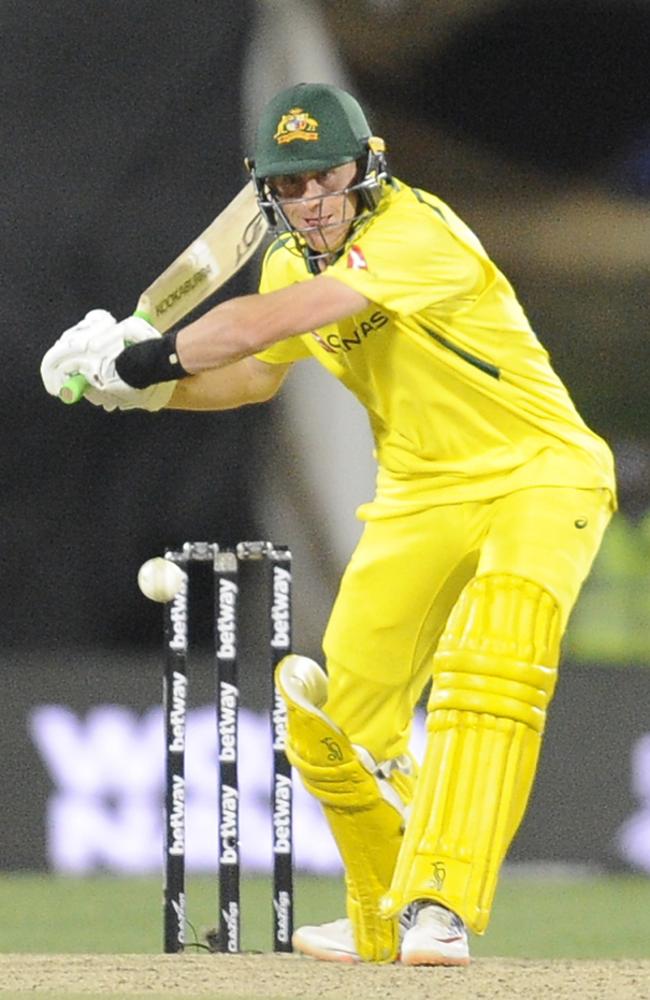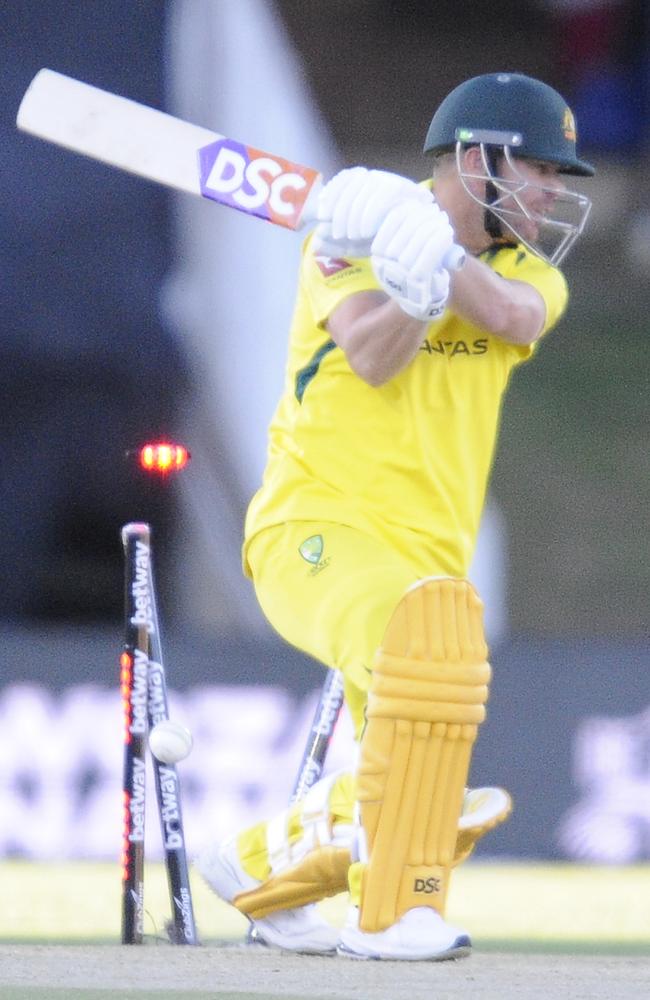Analysis: Marnus Labuschagne shows why Australia can’t have Twenty20 mindset at ODI World Cup
Marnus Labuschagne’s knock in South Africa shines a spotlight on Australia’s selections and strategy at the upcoming ODI World Cup – and the concussion sub rule, writes DANIEL CHERNY.

Well, this is a bit awkward.
Not the first time, Marnus Labuschagne has entered a match as a concussion sub, played a defining innings, and given selectors some serious food for thought.
Australia’s 15-man World Cup squad unveiled earlier the week was full of bashers, and quite reasonably so.
Long gone are the days when 250 is routinely a winning ODI score, and on flat Indian tracks brawn will be required.
But the Aussies play so little one-day cricket these days that it is easy to forget the volatility of the format. And likewise it is a trap to conflate Twenty20 performances with those in the one-day arena. White-ball cricket is a useful umbrella term, but they are markedly different entities.
Labuschagne came to the crease at 6-93 in the 14th over, with his side chasing 222. In T20 cricket that would be a completely hopeless situation. In one-dayers it is merely a very difficult one.
And exceptionally supported at No.9 by Ashton Agar – whose unbeaten 48 off 69 should also help his push for a spot in Australia’s World Cup XI – Labuschagne nurdled his way to 80 not out off 93 balls to steer the Aussies home at Bloemfontein with almost 10 overs to spare.

Notably Labuschagne didn’t send any of the South African bowlers over the rope, and struck just eight boundaries. But he still struck at 86, expertly milking the Proteas for ones and twos.
Labuschagne’s omission from Australia’s World Cup squad was justifiable. When the party was picked he was averaging 31.37 from 30 matches at a strike rate in the low 80s.
The rationale was that with so many all-round and attacking options, there was really only room for one of he and Steve Smith in the XI, and that Smith was clearly the superior option.
Labuschagne is in the squad for these matches only because of Smith’s wrist injury, and he is not due to head to India for the next batch of games ahead of the tournament proper next month.
However there are still ODIs where innings like Labuschagne’s are required. 400 is the new 300, yet the epic 2019 World Cup final was tied at 241 apiece, and it wasn’t a dramatic outlier for a tournament where scores didn’t quite explode like some had tipped before the event.
It is only one innings, however Labuschagne’s knock brings into sharper focus the form of the top seven, not least David Warner who was bowled by Marco Jansen for a second-ball duck.

For what it’s worth, the fact Labuschagne was allowed to replace Cameron Green at all was questionable. Not that a concussed player should be taken out of the game – of course they should – but that it was Labuschagne rather than Aaron Hardie, another seam-bowling all-rounder, who took Green’s place after he was hit in the head by Kagiso Rabada.
More Coverage
ICC rules stipulate that teams can replace concussed players with a “like for like” but match officials ultimately have discretion. Green entered the match with a better ODI batting average and strike rate (from a smaller sample size) than Labuschagne, however the uncapped Hardie was also sitting on the bench and on face value is the more similar player.
Green was batting at No.4 though, so plugging Labuschagne in to replace him at that spot is not far-fetched. However Green had also already bowled five overs. Labuschagne hadn’t bowled at all in any of his previous nine ODIs.
In the grand scheme of things it matters little, this match will be quickly forgotten as one of myriad World Cup lead-up games, but it sets an interesting and perhaps dangerous precedent that a specialist batter can fill in for an all-rounder.
Originally published as Analysis: Marnus Labuschagne shows why Australia can’t have Twenty20 mindset at ODI World Cup






